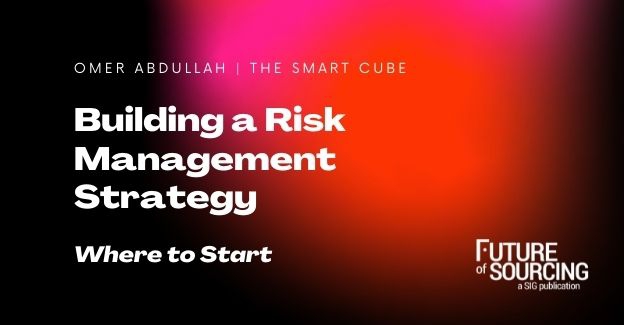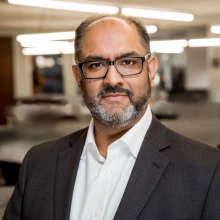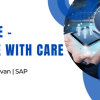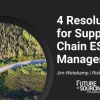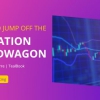There are numerous factors to consider when thinking about risk management and where to start says Omer Abdullah, Co-Founder of The Smart Cube. He explores the three considerations to keep in mind as you build your risk management strategy that stays ahead of the next big disruption.
Risk management isn’t a new term or notion to the supply chain and procurement industry, yet it continues to be one of the least addressed priorities within organizations. KPMG recently shared a report on fourth-party risk that notes roughly 80% of businesses say they need to urgently improve their assessment of fourth parties in their supply chain. While it’s certainly a topic of conversation within the boardroom, preemptive action is imperative to building a resilient strategy.
There are numerous factors to consider when thinking about risk management and where to start. We’ll explore the three considerations to keep in mind as you build your risk management strategy.
1. It’s Not a Matter of If, but When
While many businesses may have risk management in mind, they often don’t have precautions in place. If the last two years have shown us anything, it’s that risk and crises aren’t a matter of if, but when. Between the pandemic, the Great Resignation and the ongoing conflict in Ukraine, risk factors continue to come from every angle. It’s important to keep this in mind when building out budget and priorities on a quarterly basis.
Leaders must also understand that the goal isn’t to completely eliminate risk but to have a plan in place to monitor and mitigate ongoing risks. Risk factors will continue to live around us and nothing can diminish that fact. It is only with diligence, critical analysis and planning that we can manage these risks and achieve fluid, profitable movement of goods and services, minimize supply disruption and maximize business continuity.
2. Software Solutions are Not One Size Fits All
Purely manual risk management solutions are outdated and unrealistic with too much data to manage. At the same time, by definition, software solutions are a one-to-many solution. The reality is that every company and its supply chain is different. While software solutions can reduce the hours of manual research, a successful solution requires sifting through the insights to find the weaknesses.
That’s where the intersection of artificial intelligence plus human intervention (AI + HI) come into play. Advanced analytics, AI, and the availability of expertly curated datasets and insights help procurement and supply chain teams learn more than ever before about suppliers, market and commodity trends, and emerging risk factors.
Crucially, they’ve helped procurement teams evolve from spending long periods of time analyzing historical information to enabling truly proactive procurement operations.
3. As the World Evolves, Your Risk Management Must Also Evolve
As mentioned, risk is constant in all aspects of modern business. It’s constantly evolving and plays a role in every decision made at every level. So, it must be constantly managed and monitored too.
After any major crisis event, teams will want to take a deep dive into available data, see the impact, and conduct a deep supply chain risk assessment to understand how they can better manage and mitigate risk.
In addition, true risk management must be ingrained within your culture – something that’s part of every business decision – not just looked at after the fact or at the end of every quarter. As such, supply risk management can’t just be based on snapshot assessments, it must be a proactive as well as a reactive effort.
The risk landscape is constantly shifting and only by weaving risk management into your day-to-day operations and decision-making processes can you hope to control and contain it.
Every decision ultimately involves some level of risk but by having visibility into that risk and the potential impacts, you’re already a step ahead within building a manageable risk management strategy.


